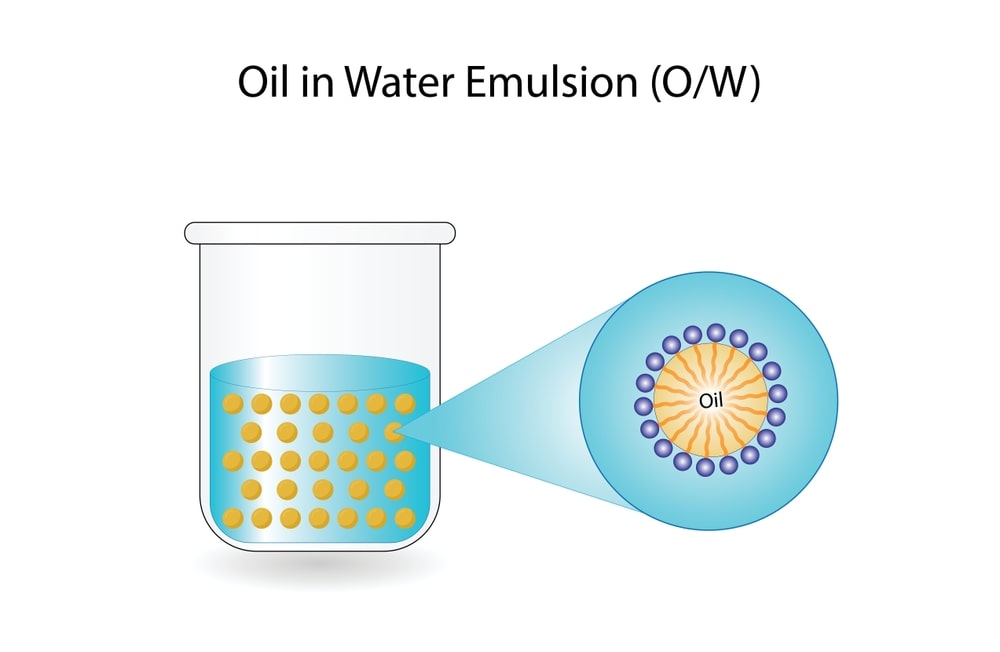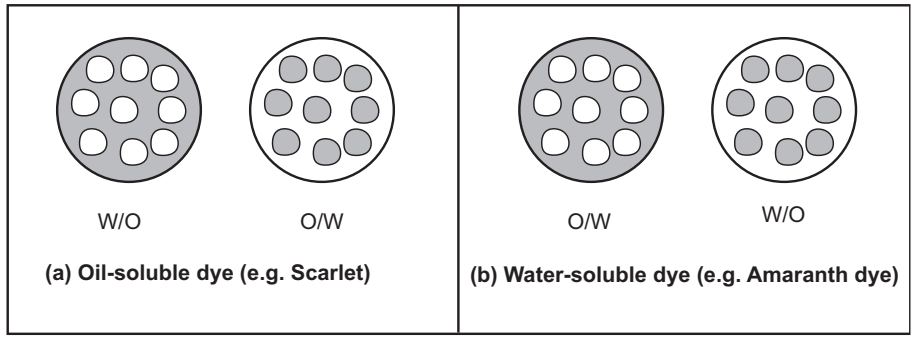• An emulsion is a liquid preparation containing two immiscible liquids, one of which is dispersed as globules (dispersed phase = internal phase) in the other liquid (continuous phase = external phase).
• Droplets ranging in diameter (0.1-100 um).
• Emulsion is thermodynamically unstable and is
stabilized by the presence of an emulsifying agent (emulgent or emulsifier).
• Emulsion is no longer official in I.P.
• Emulsion protects the drug which is susceptible to
hydrolysis and oxidation. It also provides prolonged action of medication.
• In the form of an o/w emulsion, ephedrine has a more
prolonged effect when applied to the nasal mucosa, than when used in an oily
solution.
Types of Emulsion
A primary emulsion containing one internal phase, for
example,
• oil-in-water emulsion (o/w)
• water-in-oil emulsion (w/o).
Secondary emulsion also called multiple-emulsion
contains two internal phases, for
instance,
• o/w/o
• w/o/w.
It can be used to delay release or to increase the
stability of the active compounds.
Test for Emulsion
Dilution test: Adding water to a w/o emulsion and oil to an o/w emulsion would crack the
emulsion and lead to the separation of the phases.
Conductivity test:
When current is passed to an emulsion that is connected to a voltage bulb, the bulb glows if it is o/w
emulsion since water is a good conductor of electricity and when the bulb does
not glow it is w/o emulsion because oil is non-conductor of electricity.
i.e.
o/w = current flow
w/o = current do not flow
o/w = current not flow (when purified water instead of
potable water is taken)
Fig: Conductivity test
Dye test:
Water-soluble dye will dissolve in the aqueous phase whereas oil-soluble dye
will dissolve in the oil phase. For example: Amaranth (o/w Emulsion),
Scarlet/Sudan (w/o Emulsion).
Fig: Dye test
Fluorescent test:
Oils give fluorescence under UV light, while water does not. Therefore, O/W emulsion shows a spotty pattern while W/O
emulsion fluorescence.
Filter paper test: o/w
emulsion should spread out rapidly when dropped onto filter paper, in contrast,
w/o will migrate slowly.
Cobalt chloride test: filter paper soaked in cobalt chloride (COCl2) solution and allowed to dry, turn blue to pink on evaporation to o/w emulsion.
Pharmaceutical applications of emulsions
• To mask the bitter taste of the drugs.
• o/w emulsion is a convenient means of oral
administration of water-insoluble liquids.
• o/w emulsion facilitates the absorption of
water-insoluble compounds compared to their oily solution preparations (e.g.
vitamins).
• Oil-soluble drugs can be given parenterally in the form
of oil-in-water emulsion. (e.g.
Taxol)
• Emulsion can be used for external applications in
cosmetic and therapeutic uses.



